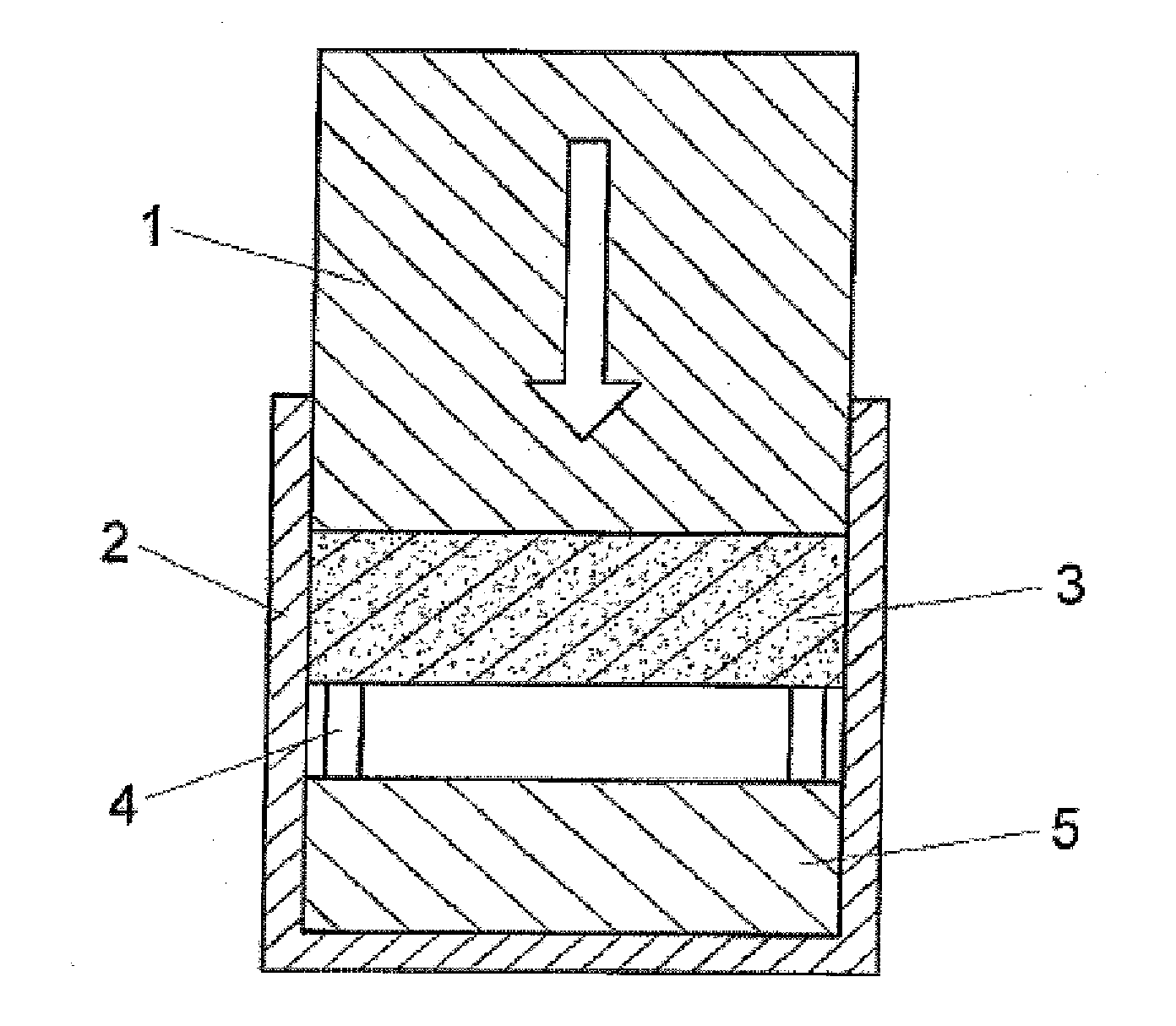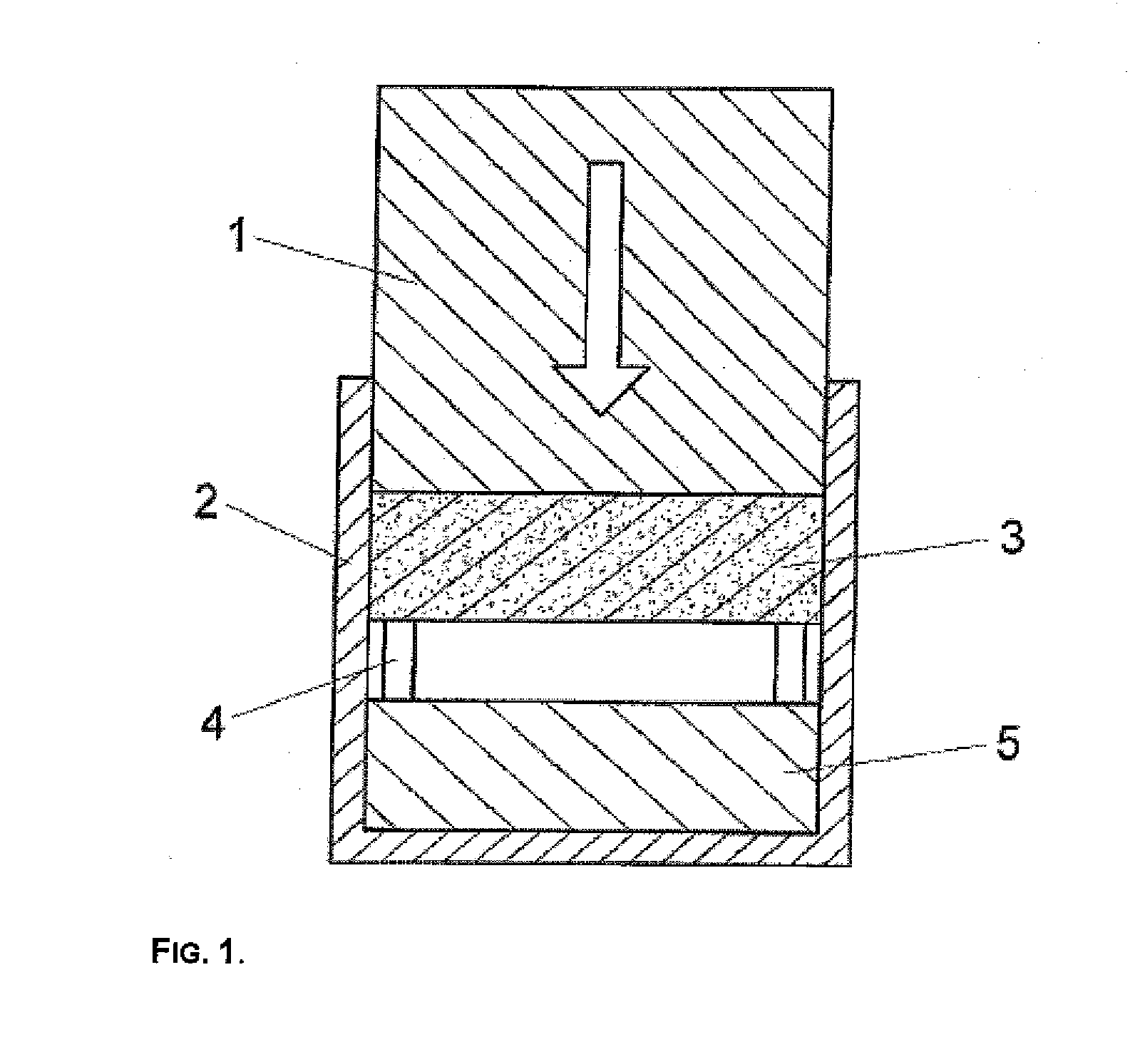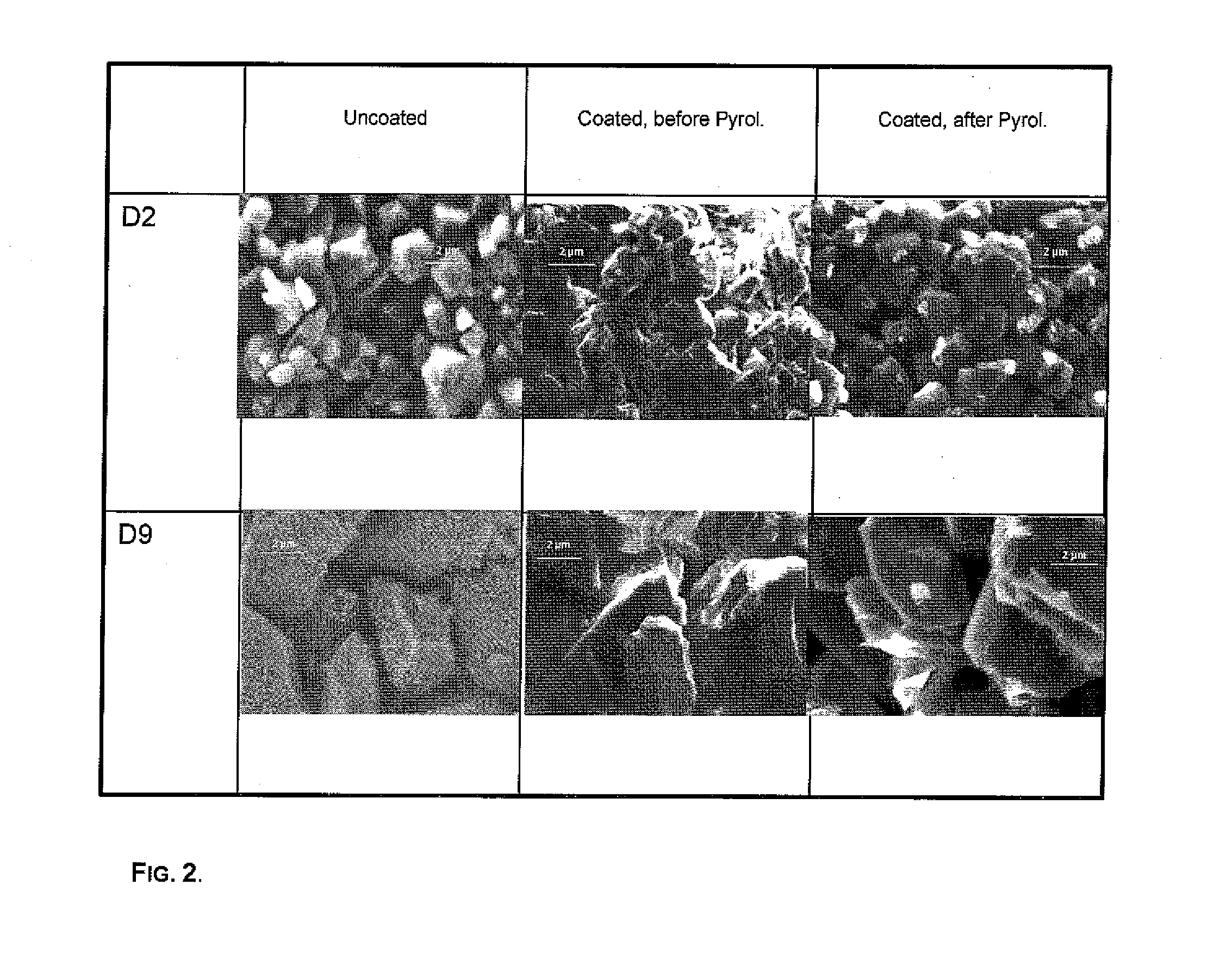Abrasive compact
a technology of abrasives and compacts, applied in the field of abrasive compacts, can solve the problems of difficult to make diamond tools of different shapes and sizes purely from cutting and shaping diamonds, application temperature may be limited, and the reaction sintering to obtain fully dense compacts is only relatively straightforward
- Summary
- Abstract
- Description
- Claims
- Application Information
AI Technical Summary
Benefits of technology
Problems solved by technology
Method used
Image
Examples
example 1
[0059]A preform containing diamond powder (average grain size of 1.5 μm) coated with a pyrolytic carbon layer was prepared.
[0060]An amount of phenolic resin to give 10 mass % in the diamond mix, was dissolved in acetone at a concentration of approximately 34.3 g / l. This solution was then mixed with the diamond powder and heated in a water bath to 70-80° C., whilst stirring, to evaporate off the acetone. The resulting agglomerated powder was crushed and screened using a −325 mesh screen. SEM micrographs of the coated grit showed that the resin was homogeneously distributed on the diamond surfaces, both before and after pyrolysis
[0061]A green compact was then formed by cold compaction of the screened powder at ca. 60 MPa. This green compact was then heat-treated at 120° C. in air for 18 hours, in order to cure the resin. The resin coating on the diamond was then pyrolysed by heat treatment under argon. The heating upramp cycle was in two parts: initially up to 450° C. at 2° C. / min; fo...
examples 2-7
[0065]Further diamond compacts was prepared according to the method of example 1, save that the diamond average grain size and phenolic resin content were altered as shown in Table A.
TABLE ATable A Summaries of various characteristicsof the compacts produced.DiamondPreformInfiltrationPhase compositiongrain sizeresin contentdepth(volume %)Example(μm)(mass %)(mm)DiamondSiCSi11.5102.5406002910full5347031.551.25———49524651351.520poor———6920poor———716.55full52408
[0066]As is evident from Table A, excess quantities of phenolic resin are undesirable in that they cause a similar pore-blocking effect to that observed without any resin being present. In this case, optimal levels of resin addition at approximately 10 mass % were observed to maximise the infiltration process and reduce the presence of undesirable free silicon.
example 8
[0067]The contents of the paper ‘The low-pressure infiltration of diamond by silicon to form diamond-silicon carbide composites’ as authored by Sigalas, Herrmann and Mlungwane is incorporated herein by reference. For the avoidance of doubt, the paper is set out below:
Abstract
[0068]The infiltration of fine-grained diamond preforms by molten silicon is limited by the blocking of the pores as a result of the volume increase during the reaction of diamond with SiC. Therefore in the present paper the infiltration of preforms made with diamond powders with different grain sizes was investigated. The preforms were prepared using phenolic resin as a binder. With increasing resin content the pore size increases, but the pore volume decreases. As a result the infiltration depth increases strongly for medium resin content. For the fine-grained ˜1.5 μm diamond preforms, a maximum infiltration depth of 2.5 mm is obtained at 10% resin, whereas at 5% resin only 1.25 mm could be infiltrated.
1. Intr...
PUM
| Property | Measurement | Unit |
|---|---|---|
| Grain size | aaaaa | aaaaa |
| Percent by volume | aaaaa | aaaaa |
| Percent by volume | aaaaa | aaaaa |
Abstract
Description
Claims
Application Information
 Login to View More
Login to View More - R&D
- Intellectual Property
- Life Sciences
- Materials
- Tech Scout
- Unparalleled Data Quality
- Higher Quality Content
- 60% Fewer Hallucinations
Browse by: Latest US Patents, China's latest patents, Technical Efficacy Thesaurus, Application Domain, Technology Topic, Popular Technical Reports.
© 2025 PatSnap. All rights reserved.Legal|Privacy policy|Modern Slavery Act Transparency Statement|Sitemap|About US| Contact US: help@patsnap.com



